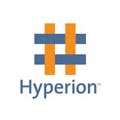What is Multi-Dimensional?
• Uses a cube metaphor to describe data storage.
• An Essbase database is considered a “cube”, with each cube axis representing a different dimension, or slice of the data (accounts, time, products, etc.)
• All possible data intersections are available to the user at a click of the mouse.
Multi-Dimensional vs. Relational
• Multi-dimensional database are usually queried top-down – the user starts at the top and drills into dimensions of interest.
– Can perform poorly for transactional queries
• Relational databases are usually queried bottom-up – the user selects the desired low level data and aggregates.
– Harder to visualize data; can perform poorly for high-level queries.
What is Essbase?
Essbase is a multidimensional database management system. The name Essbase stands for Extended Spread Sheet dataBASE. Using the custom add-in provides the end-user with near seamless compatibility in the Microsoft Excel spreadsheet program.
1. The leading enterprise multi-dimensional database engine
2. Provides real-time analytic infrastructure for business intelligence and enterprise performance management (EPM) applications.
3. Engineered for scalability, security, and rapid-response.
4. Through an intuitive interface, business users can manipulate large data sets to model complex scenarios, forecast outcomes, and perform “what-if” analyses to identify trends and optimize business results.
Why Use Essbase?
1. Rich User Experience – users “converse” with the data
2. Business and Finance can manage their own metadata and reports
3. Highly advanced calculation engine
4. Easy integration of data sources, including manual input
5. Large scalability
6. Robust, cell-level security
7. Many sophisticated reporting tools
8. Powerful Calculation Engine.
• Over 350 built-in functions, including:
– Financial functions, such as net present value, rate of return, and compound growth
– Custom multi-dimensional functions such as @ALLOCATE to drive data to multiple business intersections
– Complete time-series support
– Support for summary-level input
• Both run-time and batch calculations
• MDX support
9. Integration of Data Sources
• Unique multi-user read/write technology
• Information from many data sources can be easily integrated into one database, and thus one set of user queries
• In particular, allows budgets and forecasts to be fully integrated with actual
Friday, July 24, 2009
Thursday, July 23, 2009
Hyperion Planning 9 Tutorial
Creating Sample Application in Hyperion Planning 9 version
1. Facilitates collaboration, communication, and control across multi-divisional global Enterprises
2. Provides a framework for perpetual planning, with attention to managing volatility and Frequent planning cycles
2. Provides a framework for perpetual planning, with attention to managing volatility and Frequent planning cycles
3. Provides ease of use and deployment through the Web or Oracle's Hyperion® Smart View for Office
4. Lowers the total cost of ownership through a shorter roll out and implementation phase, and easier maintenance for applications
5. Enhances decision-making with reporting, analysis, and planning
6. Promotes modeling with complex business rules and allocations
7. Integrates with other systems to load data
Some of the features of Hyperion Planning are
1. It uses multidimensional data structure which is powered by Essbase calculation Engine for data collection and Analysis.
2. Web based user data entry forms which users themselves can create.
3. Users can set their targets online and can do bottom-up planning.
4. Ability to create complex models using business rules.
5. Currency conversion feature for multi currency applications.
6. Ability to create complex models.
7. Users can create task lists which enables them to understand the status of their tasks.
Before Starting Creating Planning Application you should have
2. Hyperion Shared Services
3. HAL-Hyperion Application Link/DIM-Data Integration Management
4. HBR-Hyperion Business Rules
5. Smart View for Office and Excel Add-in
6. EAS/AAS
7. We also require one Relational Database to Store Planning Frame Work/Components (Meta data is Stored in both RDBMS and ESSBASE)
Planning Application Creation Process
Pre-Requisites are RDBMS database and ESSBASE server +Data Source(UDL/DSN)
Steps for Creating Planning Application in System 9
1. Application Name and Description
2. Defining Calendar
3. Defining Currencies
4. Defining Plan Types




Subscribe to:
Posts (Atom)


